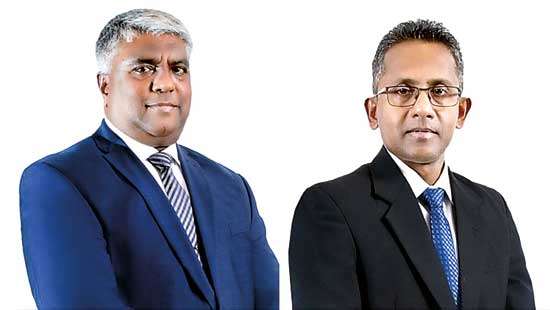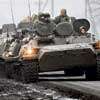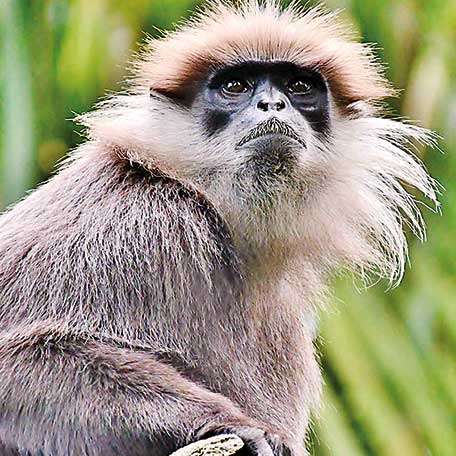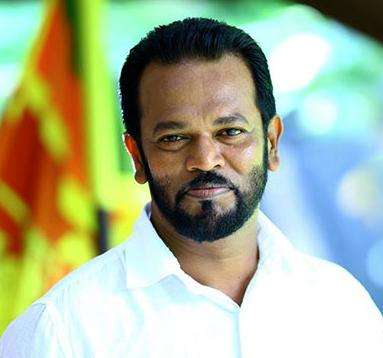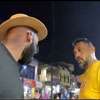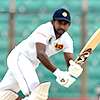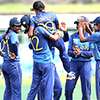Political attacks being launched against Sumanthiran is nothing new
TNA was formed independently with cautious indirect backing by LTTE
TNA was born as a loose formation without a party constitution or structure
The crucial factor that made alarm bells ring was the October 10, 2000 parliamentary election
By
D.B.S. Jeyaraj 
Former Jaffna District Parliamentarian and Spokesperson of Tamil National Alliance (TNA) and Illankai Thamil Arasu Katchi (ITAK), Mathiaparanan Abraham Sumanthiran is currently in the eye of a political storm. The YouTube interview given by the 56-year-old President’s Counsel cum politician to the “Truth with Chamuditha” show conducted by senior journalist Chamuditha Samarawickrama is the reported cause of the controversy. A few of the questions and answers in Sinhala were picked up by sections of the Tamil media that seem to have deliberately mistranslated the words of Sumanthiran with duplicitous twists and mischievous slants. This in turn led to a cacophony of angry voices over mainstream Tamil media and social media -- within and outside Sri Lanka -- berating Sumanthiran for what he had “purportedly” stated. He was, and is being, attacked viciously.
Political attacks being launched against Sumanthiran is nothing new. The lawyer –politician with liberal, relatively-moderate views is the favourite target of “hawks” on either side of the ethnic divide. As far as Tamils are concerned, the green-eyed monster runs amok in the hearts and minds of many Tamil politicians both within and outside TNA/ITAK folds. This is due to the remarkable rise of Sumanthiran in both Tamil and national politics within a comparatively short stint. Thus the ‘Truth with Chamuditha’ interview provided an opportunity for these elements to draw their daggers separately and strike jointly at the ex-Jaffna District MP.
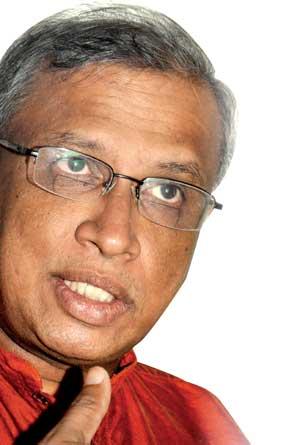
Many TNA ex-MP colleagues of Sumanthiran including ITAK leader Somasundaran“Maavai” Senathirajah issued statements critical of Sumanthiran without even contacting their erstwhile fellow parliamentarian to verify facts. This was followed by many Tamil media reports about a series of “consultations” organised by Senathirajah among TNA ex-MPs to discuss the removal of Sumanthiran as party spokesperson and ouster from ITAK. There was also a botched attempt to sabotage a meeting scheduled between Prime Minister Mahinda Rajapaksa and Sumanthiran. The meeting however took place as scheduled despite these underhand efforts.
Finally, Sumanthiran released a twelve-minute YouTube video where he gave an “explanation” of what had actually transpired and how his interview in Sinhala was being distorted by interested parties to vilify and attack him. He also expressed regret over the fact that none of his colleagues including ITAK leader Senathirajah had extended to him the courtesy of seeking his version of events before unilaterally issuing statements criticising him. This video clip seems to have turned the tide in Sumanthiran’s favour leaving a lot of people with “muttai” on their faces. To his credit, Sumanthiran has defiantly stood by all what he actually stated in the interview as opposed to the unfounded accusations of his critics. It appears that the raging anti-Sumanthiran storm would gradually subside into a tempest within the TNA tea cup though relations between Sumanthiran and some Tamil politicians are likely to be drastically affected.
CREATION OF LTTE
One of the interesting aspects highlighted in this anti-Sumanthiran drama was the origin of the TNA itself. Chamuditha Samarawickrama in his interrogative style harped on the TNA being the creation of the LTTE through a barrage of “hostile” questions. He even charged that LTTE leader Velupillai Prabhakaran chaired the inaugural TNA meeting. Sumanthiran denied the charges with unflappable dignity. He emphasised the fact that the TNA was not formed by the LTTE in 2001.
This provided further ammunition to the anti-Sumanthiran camp. It began stating that the TNA was indeed formed by the LTTE leader. Although TNA leader Rajavarothayam Sampanthan has consistently stated that the TNA was not formed by the LTTE, critics of the TNA continue to accuse the TNA of being a Tiger creation. What has complicated matters further is the tendency in recent times of several TNA personalities to claim that the party had been formed by the LTTE. Since some of the anti-TNA Tamil hardliners like C.V. Wigneswaran, Ananthy Saitharan, M.K. Sivajilingam, Gajendrakumar Ponnambalam and Selvakumar Gajendran are singing the “Pulippaattu” or Tiger song, these TNA politicians also pose in “Tigerish” garb. They think (erroneously) that by saying the TNA was created by the LTTE, they can score over their political rivals. Incidentally, many of the TNA persons claiming to be the offspring of the LTTE nowadays were not around when the TNA was formed in 2001.
What then is the truth? Contrary to popular belief, the TNA in the beginning was not a Tiger creation. It was formed independently with cautious indirect backing by the LTTE. Thereafter, the LTTE took it over and controlled it. It is against this backdrop therefore that I intend focusing – with the aid of my earlier writings – on how the Tamil National Alliance was formed in 2001 and the role played by the LTTE in the formation of the TNA.
The TNA was formed in 2001 due to an imperative need. The LTTE was continuing with its military campaign against the SriLankan State and its armed forces. While some Tamil political organisations aligned themselves with the ruling regimes, several other non–LTTE political parties tried to engage in democratic politics within the limited political space available. However, they faced threats and physical danger from both the LTTE and government-backed para-military outfits. Furthermore, these parties espousing Tamil nationalism were hopelessly divided. Hence, votes were fractured and parliamentary representation fragmented. The big parties like the UNP and SLFP along with their Tamil allies were gradually gaining ground. Many Tamils began feeling that some form of political unity was necessary to garner more votes and secure adequate representation for the Tamil nationalist forces.
OCTOBER 10, 2000 ELECTION
The crucial factor that made the alarm bells ring loud was the October 10, 2000 parliamentary election. The results in the North-East sent shockwaves to the Tamils in general and some Tamil parties in particular. No Tamil including Sampanthan was elected in the politically-sensitive Trincomalee District. In Batticaloa, only two Tamils from the Tamil United Liberation Front (TULF) were elected. The TULF at that time comprised the ITAK and some ex-members of the Tamil Congress. Today, the TULF sans the ITAK is a caricature of its former self. Another Tamil won from the ruling People’s Alliance (PA); also won in the 2000 poll from Batticaloa. In Ampara District, a Tamil independent backed by the EPDP was elected.
The Wanni District with six seats saw two Sinhala (from PA and UNP) and one Muslim MP being elected. Three Tamil MPs from the Tamil Eelam Liberation Organisation (TELO) were elected. Jaffna with nine seats saw the Eelam People’s Democratic Party (EPDP) getting four including the bonus seat. The TULF got three. The Tamil Congress got one. The United National Party got one. The UNP won in Jaffna after 48 years. In 1952, Sir Ponnambalam Ramanathan’s son-in-law Suppiapillai Nadesan had won. Now Thiyagarajah Maheswaran was returned.
No Tamil party got enough votes entitling it to a national list seat. 2000 saw the Tamils being underrepresented in the North-East. Moreover, Sinhala dominated national parties and Tamil parties like the government affiliated EPDP had done well. It was apparent that among the causes for the non-governmental Tamil political party debacle was disunity, fragmentation of Tamil votes and the lack of an imaginative or inspiring political agenda.
EASTERN UNIVERSITY SEMINAR
The seriousness of the situation was acutely felt in the ethnically-heterogeneous East rather than the near-homogenous North. A seminar analysing the situation was held at the Eastern University. It was chaired by former “Daily Mirror” columnist Dharmalingam Sivaram alias Taraki. Several academics, journalists, teachers, professionals, social workers, undergraduates and political representatives participated. It was resolved at this conference that the different Tamil political parties in the opposition should unite under an umbrella organisation to prevent fragmentation of votes. It was also felt that such an organisation should be broadly supportive of the LTTE. It was also decided that the LTTE’s approval for the move be obtained. A steering committee with three joint chairs was formed to coordinate the implementation of this task.
The mission consisted of three aspects. Firstly, the approval and implicit support of the LTTE. This required guarantees of safety and security by the LTTE that it would not assassinate Tamil politicians in the opposition. In return, these Tamil parties had to acknowledge the pre-eminence of the LTTE and endorse it as the sole representative of the Tamils in any negotiation.
Secondly, the political parties with a militant history like the Eelam People’s Revolutionary Liberation Front (EPRLF), People’s Liberation Organisation of Tamil Eelam (PLOTE) and TELO had to declare they would lay down arms and not collaborate with the State in hunting the LTTE. They also had to sever links with para-military outfits linked to them like the Razeek group (EPRLF), Mohan group (PLOTE) and Ranjan group (TELO). All were in the East.
Thirdly, the non-militant parties like the TULF and Tamil Congress had to agree to work together in a common front with the ex-militant groups. Both parties were reluctant as they felt the ex-militant groups hands were tainted with blood. Besides, the TULF stood for an “unarmed democracy.” There was also the long, embittered history of rivalry between the Tamil Congress and the FP-TULF.
KARIKALAN INFORMALLY INVOLVED
The LTTE hierarchy in Wanni was not directly involved in the negotiating process. But Karikalan, the former Tiger political commissar for Batticaloa-Ampara, was supportive and informally involved. Even as talks were on the LTTE assassinated “Robert” the TELO head of Aaraiyampathy Pradeshiya Sabha (this Robert is different to the EPRLF “Robert” killed by the LTTE in Jaffna in 2002). The assassination was a major setback as the TELO wanted to pull out of unity talks as a result.
The committee however persisted in its efforts and appealed to the LTTE’s military leadership of the East. The eastern regional military commander then was none other than Vinayagamoorthy Muraleetharan alias “Col” Karuna. The LTTE “explained” that the assassination as a “mistake” due to a communication gap between the intelligence division and political wing. Subsequently, leading personalities from the TELO and EPRLF met with Karikalan in secret and discussed matters. Assurances were obtained. Likewise, some TULF personalities met with LTTE leaders and held discussions.
Initially, there were two hitches. The PLOTE led by Dharmalingam Siddharthan was willing for unity but the PLOTE cadres in Vavuniya (PLOTE stronghold) were unwilling to align with the TELO (also strong in Vavuniya). Likewise, the TELO hierarchy was reluctant to unite with the PLOTE as it feared erosion of support in the Wanni. Finally, the PLOTE or its political party, the Democratic People’s Liberation Front (DPLF), opted out.
The second was the long-standing antipathy of the Tamil Congress towards the Federal Party (Illankai Thamil Arasu Katchi) and its successor, the TULF. The Tamil Congress wanted all parties to unite under the Tamil Congress symbol of cycle and contest instead of the TULF’s sun. Dr. Yogalakshmi Ponnambalam was then the dominant personality in the Tamil Congress as her husband Kumar Ponnambalam had been killed in January 2000. After protracted discussions held at her residence, she consented to unite and contest under the sun symbol. Similarly, some stalwarts in the TULF were reluctant to unite with the Congress and other ex-militant groups but gradually they were won over or reduced to silence.
TWO PARALLEL COURSES
Even as these discussions continued, two parallel courses of action were on. One was the sudden phenomenon of leaflets and statements to the press by hitherto unheard of organisations like Sankiliyan Padai, Kulakkottan Padai and Pandara Vanniyan Padai. While “padai” means force, the other references were to regional rulers like King Sankili of Jaffna, Kulallottan monarch of Trincomalee and chieftain Pandaravanniyan of Adankapatru. All these leaflets and statements urged Tamil unity and threatened those not cooperating with punitive action. They were given wide publicity in Tamil newspapers.
The other parallel course of action was the well-meaning efforts of some Colombo based prominent Tamils to bring about overall Tamil unity. These Tamils comprised leading businessmen, professionals and social workers. Some of them were involved in discussions with counterparts in Batticaloa striving for unity. The efforts of these “Colombo” based Tamils also played a major role in unity talks.
At the penultimate stages, the LTTE in Wanni got directly involved. Some leaders of the TULF, Tamil Congress, TELO and EPRLF were contacted by telephone and urged to unite and contest under the TULF “sun” symbol. The LTTE factor galvanised the negotiating parties into concluding talks successfully.
“THAMIZH THESIEEYA KOOTAMAIPPU”
A working agreement among the TULF, ACTC, EPRLF and TELO was reached to form a coalition known as “Thamizh Thesieeya Kootamaippu” or Tamil National Alliance. The TNA would contest under the TULF symbol. A scheme apportioning candidates to each party in the different electoral districts was also agreed upon. This inaugural meeting was held in the Colombo residence of businessman V.R. Vadivetkarasan.
The formation of Tamil National Alliance was announced through a press communiqué dated October 22, 2001. The press communiqué issued on October 22, 2001 heralding the formation of the TNA was signed by four persons representing the TULF, All Ceylon Tamil Congress (ACTC), TELO and Eelam People’s Revolutionary Liberation Front (EPRLF). They were R. Sampanthan (TULF), N. Kumarakuruparan (ACTC), N. Srikantha (TELO) and K. Premachandran(EPRLF). The press statement had four salient points that more or less amounted to an “articles of association” for the Tamil National Alliance.
The first was about how places on candidate lists were to be allocated to each of the four parties in a parliamentary election. The arrangement was as follows:
Jaffna: TULF – 7; ACTC - 3; TELO - 1; EPRLF - 1
Wanni: TULF - 3; ACTC - 1; TELO – 4; EPRLF - 1
Batticaloa: TULF – 5; ACTC - 1; TELO - 2; EPRLF - 1
Trincomalee-TULF – 3; ACTC – 1; TELO – 2; EPRLF - 0
Ampara: TULF – 5; ACTC - 1; TELO – 1; EPRLF - 0
The second point was about nominations as national list MPs. The order of priority was TULF, ACTC, TELO and EPRLF. If the TNA was entitled to a national list MP in terms of votes received, it would first go to the TULF nominee. If entitled to a second MP, it would be for the ACTC nominee.
The third point was that the constituent parties should refrain from attacking or criticising each other publicly. Special care should be taken during the election campaign about not engaging in propaganda or counter-propaganda against a fellow TNA constituent.
The fourth point was about intra-TNA disputes and problems. If and when such issues occurred, the TNA constituents should discuss the matter among themselves in a peaceful way and arrive at an amicable solution through a majority vote. If that was not possible, the services of an outside facilitator panel should be enlisted to help resolve the issue.
SIX MEMBER FACILITATOR PANEL
The facilitator panel or “anusaranaialar kuzhu” comprised the following members:
1. V. Kailasapillai
2. Kanthiah Neelakandan
3. V.R. Vadivetkarasan
4. Nimalan Karthikeyan
5. S. Thiyagarajah
6. K. Jeyabalasingham
The facilitators were respected members of the Tamil community primarily based in Colombo. They were mainly professionals or successful commercial entrepreneurs. With the exception of Thiyagarajah who was then the treasurer of the TULF, they did not belong to any political party.
It was under such circumstances that the TNA was born as a loose formation without a party constitution or structure. The newly-formed alliance had its baptism of fire when parliamentary election was held on December 5, 2001. The TNA in its manifesto urged a negotiated settlement of the ethnic conflict and emphasised that the LTTE would represent the Tamil people at such talks.
When the election campaign got underway, the LTTE did not openly support the TNA. The 2001 election campaign was conducted without overt LTTE participation. The greatest benefit for the TNA candidates was that they could campaign without fear of violence from the LTTE. When the election results were announced, the TNA contesting under the sun symbol of the TULF had done very well.
In Jaffna, the TNA got six of the nine seats. In Wanni, the TNA got three of the six seats. In the East, the TNA won one in Trincomalee, one in Ampara and three in Batticaloa District. On the strength of votes received, the TNA was entitled to a national list seat. The TNA under the TULF label had fourteen elected and one appointed MP in 2001. Of this fifteen, the TULF had seven, TELO had four, ACTC had three and the EPRLF one. The “unity” of these Tamil parties seemed to have reaped political dividends.
CREEPING TIGERISATION OF TNA
This then is the story of how the TNA was formed in 2001. The LTTE had no direct role in its formation though the LTTE supported the exercise indirectly. It was after the TNA tasted success at the 2001 poll that the creeping Tigerisation of the TNA by the LTTE commenced. Gradually, the LTTE brought the TNA under its control. How this state of affairs came about is a tale worth recounting in detail on another occasion.
D.B.S.Jeyaraj can be reached at dbsjeyaraj@yahoo.com





